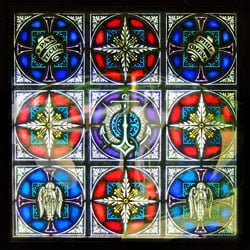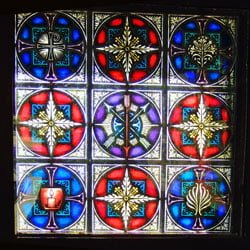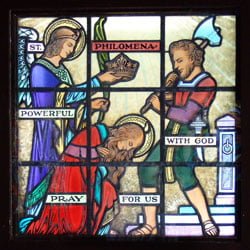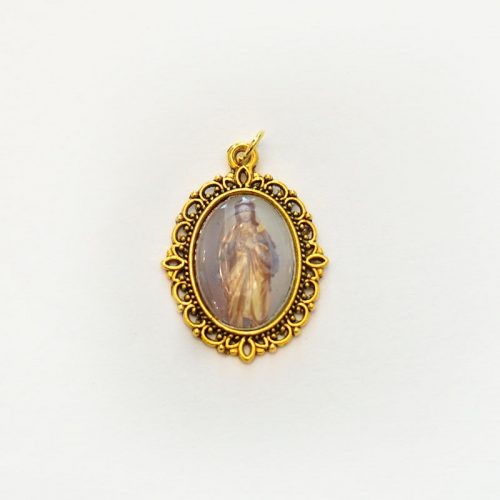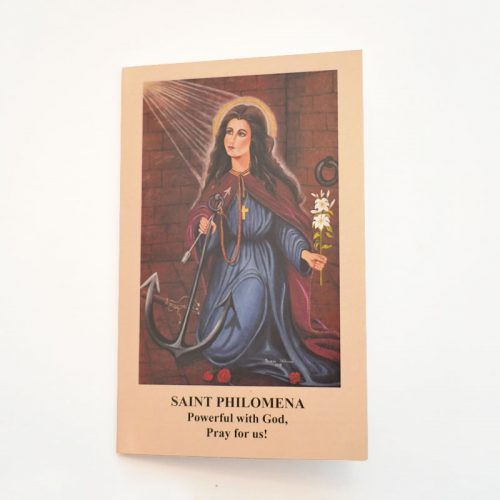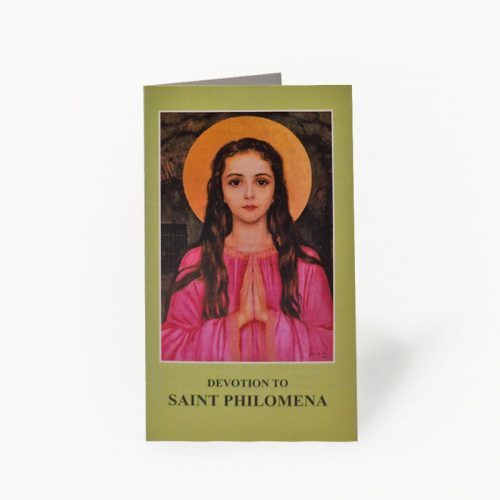HISTORY OF THE SHRINE
BRIGGSVILLE, WI
THE LOCATION
HISTORY
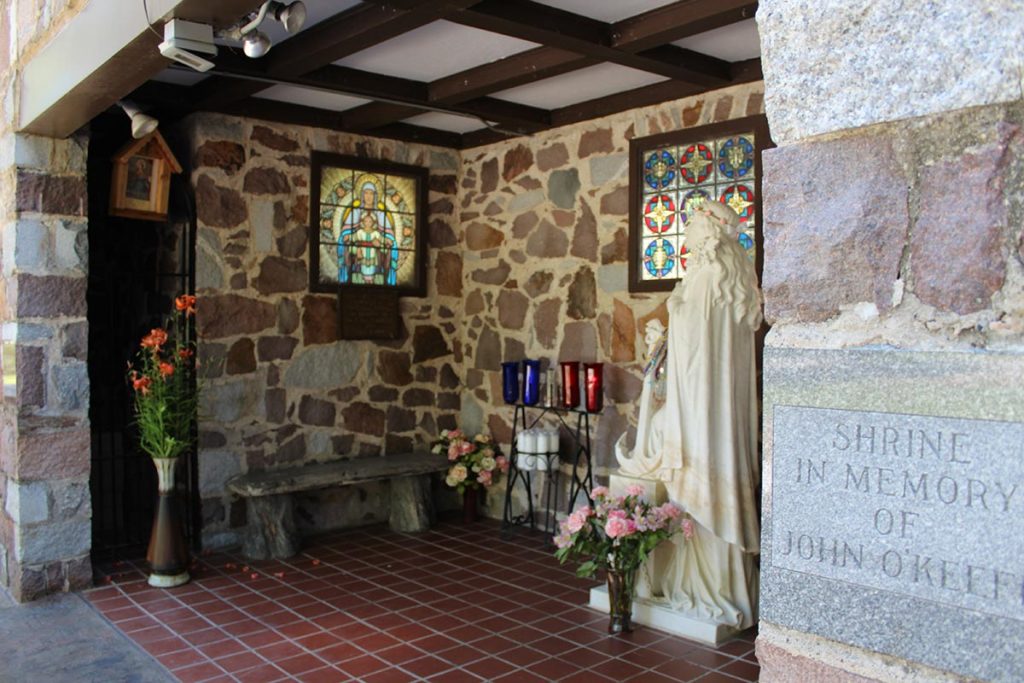
In the late 1940’s a self-sacrificing priest, named Father I.C. Wiltzius, devoted his frail energy to calling the world to venerate a Virgin-Martyr known as Saint Philomena. It was through the efforts of Father Wiltzius that the Shrine to Saint Philomena was established. He came from the Milwaukee area, and brought with him a first-class relic of the Little Virgin Martyr, originally obtained by Father Maurice Dorney in Naples, in 1937.
Saint Philomena made her entry into Briggsville on the last Sunday of August 1947, and the outdoor shrine dedicated to her honor was started on August 8, 1949. It was planned as a replica of the dungeon where the young Martyr-Saint, Philomena, had suffered and died to preserve her virginity.
The upper structure is built of granite from many parts of the world. The red granite, which predominates, is the genuine Montello stone, from Montello, a twenty-five mile distance from Briggsville.
A man of seventy-six and his helper a boy of sixteen completed the structure on September 1, 1950. There are forty-five tons of granite in the superstructure alone, all hauled and laid by the two. Old Jake used a cane to support himself because he was badly crippled…until the fourth day of work…that’s when his “Little Girl Friend”, as he fondly called Saint Philomena, fixed him up, he swears. He discarded the cane and didn’t use it again.
THE SHRINE
STATUES
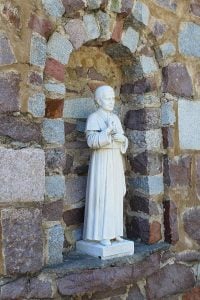
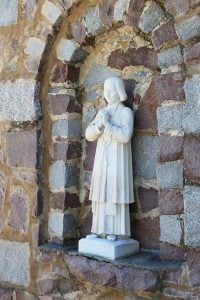 The statue of Saint Philomena is carved from Carrara marble and was imported from Italy. It is six feet, three inches high. Father Wiltzius’s housekeeper told of the arrival of the statue:
The statue of Saint Philomena is carved from Carrara marble and was imported from Italy. It is six feet, three inches high. Father Wiltzius’s housekeeper told of the arrival of the statue:
“The pine packing case was opened to determine whether the statue was undamaged and then was nailed shut again. That night, there was a lot of racket and the sides of the packing case were knocked clear across the street! You might say now that that was strange, but it really happened.”
Father said the Saint was impatient to have the shrine completed; she wanted to get out of her case.
On the left wall of the dungeon shrine is a statue of Saint John Vianney (left image), and on the right wall is a statue of Pope Pius X (right image); both are remembered for their great devotion to Saint Philomena.
A statue of the Blessed Mother is on the very top wall of the Shrine, overlooking all.
WINDOWS
THE STAINED GLASS WINDOWS
The stained glass windows, embellishing the Shrine of St. Philomena at Briggsville, tell the story of the life and tortures of the beloved Saint. These windows are carried out in pictorial and symbolic manner.
THE SYMBOLIC WINDOWS
Windows two, three, and four are a series of symbolic windows at the rear of the Shrine. The conventionalized oak leaf, used in four panels of each of these symbolic windows, represents strength and courage. The central panels of each of the windows represent a phase of her martyrdom.

WINDOW I
The first window represents the Apparition of the Blessed Virgin, with the Infant Savoir, to Saint Philomena, while she was fettered in her tomb below the royal palace.
The Statue, for this reason, does not face forward but gazes up at the representation of the Apparition.

WINDOW II
The Pillar and the Scourges are at the center of the second window.
The corner emblems:
- The crown, for royalty and her victory over persecution and death.
- The Holy Spirit, for guidance.
- The censor with smoke arising, for prayer.
- And the flaming heart, representing the love of Saint Philomena for Jesus Christ.
WINDOW IV
Arrows are at the center of this window; two pointed in opposite directions, and one with a curve line upon it, signifying fire.
The corner emblems:
- A cross with Aura (Lumina) for light, which came to her parents in their conversion from paganism to Christianity.
- Lilies, for purity.
- A votive light, for offering of her life as a martyr for the sake of Jesus Christ.
- A Palm, for victory over persecution.
WINDOW V
This is another pictorial window. It shows the final phase of her martyrdom: beheading.
The Archangel Gabriel stands at her side, poised to place the Crown of Martyrdom upon her head, and the palms of victory in her arms.
Her executioner, with a fiendish glee upon his face, is poised and ready to carry out the last of the cruel torments commanded by the Roman Emperor Diocletian.
PRAY TO SAINT PHILOMENA, WHATEVER YOU ASK FROM HER, SHE WILL OBTAIN FOR YOU.
POPE GREGORY XVI

